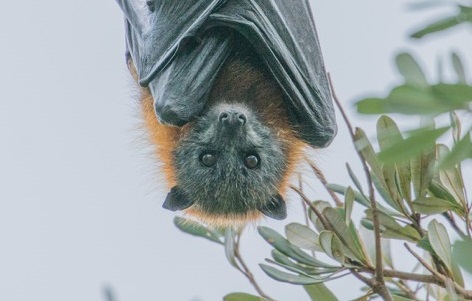Blog
Contact media@wires.org.au for enquiries or call 0416 272 153.
For the latest updates on bushfire recovery projects and emergency response
Read WIRES Emergency Recovery Plan and WIRES National Emergency Response Plan
Emergency Help Needed for Flying-foxes

Large areas of Northern NSW and South East Queensland are experiencing what appears to be a severe flying-fox starvation and dehydration event.
WIRES branches are receiving unprecedented numbers of flying-fox calls for this time of the year and volunteers are overwhelmed by the number of animals needing urgent assistance.
Spring
and summer are always extremely busy for wildlife rescues, this is
before the additional stress of emergency events such as fires,
heat-stress events and dire food and/or habitat shortages. Spring
is also the start of the birthing season and the current situation may
see more females get into difficulty birthing and more pups may be
separated from their mothers.
Emergency Rescue Advice for Flying-Foxes
- If you see a sick, injured or orphaned flying-fox please keep your distance, do not touch it or try to contain it. Please keep any pets and other people away from the animal as well.
- If
the animal is obviously injured, if it's a young pup, or if it's on the
ground, please call WIRES 1300 094 737 for assistance. If
it is a hot day when you are waiting for a rescuer to arrive and you
are able to safely provide some form of shade over the flying-fox to
keep it out of the direct sun, please do.
- If you are in Northern NSW where the current emergency is underway including the Mid North Coast, Clarence Valley and Northern Rivers, if you see an animal alone in a tree that appears uninjured, simply let it rest. If it is still there the next day or if you are in other areas of NSW please call WIRES 1300 094 737 for rescue advice and assistance.
- For
animals that appear uninjured that you are observing from a distance to
confirm if they can return to their colony after enough rest, if it is
safe to do so, please put fruit such as apple or pear high up in nearby
trees, making sure not to go close to the bat, this may help the animal
get enough energy to return home.
- If the animal is dead it is safe to scoop it up in a towel or newspaper to dispose of it.
Flying-foxes are very intelligent creatures and play an important role in Australian environments. They are natural pollinators and seed dispersers and are crucial for the survival and regeneration of our native forests.
With flying-foxes, particularly Grey-Headed Flying-foxes already listed as vulnerable to extinction, community help is needed to save as many individuals as possible and long-term to save these species.
To assist please plant native trees and plants so that in the future more wildlife will have access to food, consider becoming a wildlife rescuer and carer to help native animals in distress, and donate to WIRES Emergency Fund to help WIRES respond to this event and future emergencies as they occur.Search
Newsletter
Stay in touch and get our regular rescue stories, WIRES updates and a free copy of our 15 Ways to Help Wildlife ebook
Recent Posts
- Emergency Response Training for Wildlife Volunteers
- WIRES Introduces New Wildlife Rehabilitation Governance Courses in Collaboration with NPWS
- Community Support for Post-Bushfire Recovery of Wildlife in the Greater Blue Mountains
- Research Grants Program-2023 Recipients Announced
- National Koala Conference
- Nature Conservation Council's Bushfire Conference
- Support Stronger Nature Laws
- Helping Endangered Cockatoos: WIRES Grant Success Story
- Landmark Conservation Project Ensures The Future of The Northern Bettong
- Wildlife Road Collisions Unveiled
